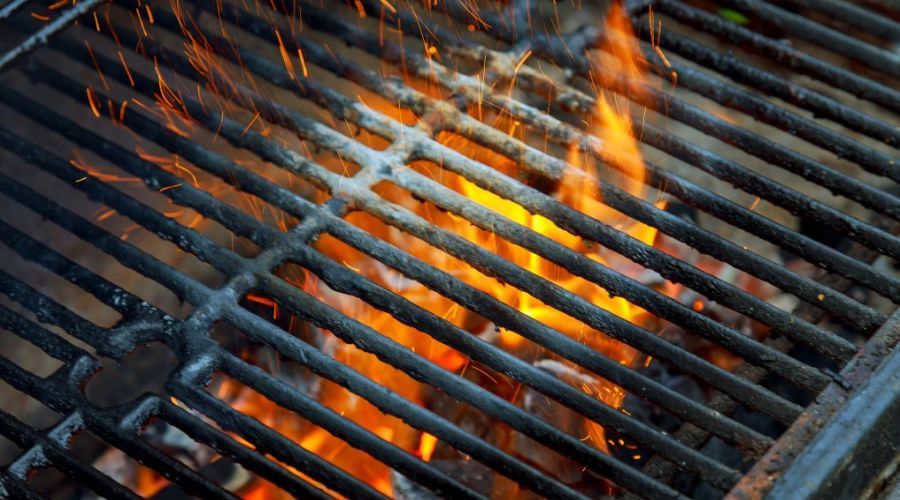Best Heat Zone Setup with Grill Grates for Perfect BBQ
Written By James Morgan
For barbecue enthusiasts, achieving the perfect best heat zone setup with grill grates is crucial to mastering the art of grilling. Understanding how to optimize your grill for various cooking methods is the key to creating mouthwatering dishes that have the perfect char, flavor, and texture. Whether you're a seasoned griller or just starting, knowing how to set up your heat zones can significantly enhance your grilling experience.
When discussing the best heat zone setup with grill grates, it's essential to consider the type of grill you're using, the food you're planning to cook, and how different heat zones can work together to achieve the desired results. By strategically placing your grill grates, you can create distinct heat zones that cater to various cooking techniques, such as searing, smoking, and indirect cooking.

Understanding Heat Zones
To create the ideal heat zone setup, it's important to understand the different types of heat zones that can be established on a grill. Typically, grills can be divided into three main heat zones: direct heat, indirect heat, and combination zones.
Direct heat is the hottest part of the grill, located directly over the flames or heat source. This zone is perfect for searing meats, creating grill marks, and cooking foods quickly. On the other hand, indirect heat is where the food is cooked adjacent to the heat source, ideal for slow cooking and smoking. Finally, the combination zone is where you can switch between direct and indirect heat, offering flexibility to manage the cooking process.
Setting Up Your Grill Grates
To establish the best heat zone setup with grill grates, start by arranging your grill grates to accommodate the different heat zones. For instance, if you're using a charcoal grill, you can create a two-zone fire by piling coals on one side for direct heat and leaving the other side coal-free for indirect heat. For gas grills, simply adjust the burners to create varying temperatures across the grill surface.
When setting up your grill grates, consider investing in quality grill grates that offer superior heat retention and distribution. GrillGrates are an excellent choice, as they not only enhance heat management but also help prevent flare-ups and sticking. Additionally, their unique design allows for even heat distribution, making them perfect for setting up distinct heat zones.
Choosing the Right Grill Grates
Choosing the right grill grates is essential for achieving the best heat zone setup. The material of the grates can greatly impact heat distribution and retention. Common materials include cast iron, stainless steel, and porcelain-coated grates.
Cast iron grates are known for their excellent heat retention and ability to create perfect sear marks. However, they require regular maintenance to prevent rusting. Stainless steel grates are durable, easy to clean, and offer good heat distribution. Lastly, porcelain-coated grates provide a non-stick surface and are resistant to rust, making them a popular choice for many grillers.
Grilling Techniques and Tips
Once you have set up your grill grates with the best heat zone setup, it's time to master some grilling techniques. Here are a few tips to elevate your grilling game:
- Reverse Searing: This technique involves cooking the meat over indirect heat until it reaches the desired internal temperature, then finishing it with a quick sear over direct heat for a perfect crust.
- Two-Zone Cooking: Use the direct heat zone for searing and the indirect zone for finishing the cooking process, allowing for more control over the doneness of the meat.
- Low and Slow Cooking: Perfect for smoking meats, this method involves cooking over indirect heat at lower temperatures to achieve tenderness and smoky flavor. For more on this technique, check out low and slow on grill grates.
Maintaining Your Grill Grates
Proper maintenance of your grill grates is essential for ensuring optimal performance and longevity. Regular cleaning prevents buildup of grease and food particles, which can impact heat distribution and cause flare-ups. To learn more about maintaining your grill grates, visit how often to clean grill grates.
Additionally, seasoning your grill grates can help prevent sticking and rusting. Lightly oil the grates before and after each use to maintain their condition. For more tips on preventing food from sticking, see how to avoid sticking on grill grates.

FAQ
What is the best material for grill grates? While each material has its benefits, cast iron grates are often preferred for their excellent heat retention and ability to create distinct grill marks.
How do I create a two-zone fire on a charcoal grill? Arrange the charcoal on one side of the grill for direct heat, leaving the other side free of charcoal for indirect cooking.
Why are GrillGrates recommended? GrillGrates are known for their superior heat management, even heat distribution, and ability to reduce flare-ups, making them ideal for setting up distinct heat zones.
In conclusion, mastering the best heat zone setup with grill grates is essential for any barbecue enthusiast looking to take their grilling to the next level. By understanding heat zones, selecting the right grill grates, and employing effective grilling techniques, you'll be well on your way to creating delicious and perfectly cooked meals.
For more insights into grilling and grilling accessories, explore why use grill grates and improve your grilling experience.



